King Tutankhamun, one of the most famous and enigmatic pharaohs of ancient Egypt, remains a symbol of the country’s grandeur and mysterious history. Discovered in 1922 by archaeologist Howard Carter, the tomb of King Tut, often referred to as the “Boy King,” contained over 5,000 treasures, offering an unparalleled look into the opulence and spiritual beliefs of ancient Egypt. These treasures, ranging from golden statues to intricate jewelry, were meant to accompany Tut into the afterlife, ensuring his immortality and divine protection. Each artifact reveals the remarkable craftsmanship and cultural significance of Egypt’s ancient civilization, showcasing the power, wealth, and religious devotion that defined Tutankhamun’s reign, despite his short rule. Today, these discoveries continue to captivate the world, shedding light on the rich legacy of a civilization that continues to inspire awe and curiosity.
- Egypt Tour Magic
- Egypt Tour Packages
- Excursions in Egypt
- Cairo Tours and Excursions
- Hurghada Tours and Excursions
- Soma Bay Tours and Excursions
- Makadi Bay Tours and Excursions
- Sahl Hasheesh Tours and Excursions
- El Gouna Tours and Excursions
- Marsa Alam Tours and Excursions
- Port Ghalib Tours and Excursions
- El Quseir Tours and Excursions
- Dendera and Abydos Day Tours
- Aswan Tours and Excursions
- Luxor Tours and Excursions
- Alexandria Tours and Excursions
- Sharm El Sheikh Tours and Excursions
- Top Rated Tours in 2025
- Optional Excursions in Egypt
- Private Transfer
- Blogs About egypt
- Ancient Egypt
- What You Need To know Before Your First Trip To Egypt
- Best Places to Visit in Egypt 2025
- Top Attractions in Red Sea Resorts 2025
- Top 10 Tourist Activities in Egypt
- Top 30 Activities You Can’t Miss in Egypt
- The Guide to Guided Tours in Egypt
- Egypt’s Ancient and Modern History
- The Nile River
- The Deserts of Egypt
- Historical Sites in Egypt
- Cairo
- Alexandria
- Luxor
- Aswan
- The Red Sea
- Dendera Temple
- El Fayoum Oasis
- Bahariya Oasis
- Siwa Oasis
- Al Alamein
- Marsa Matruh
- Ancient Egyptian gods
- famous Egyptian dishes
- UNESCO World Heritage sites
- About Us
- Why Egypt Tour Magic
- Egypt Tour Magic
- Egypt Tour Packages
- Excursions in Egypt
- Cairo Tours and Excursions
- Hurghada Tours and Excursions
- Soma Bay Tours and Excursions
- Makadi Bay Tours and Excursions
- Sahl Hasheesh Tours and Excursions
- El Gouna Tours and Excursions
- Marsa Alam Tours and Excursions
- Port Ghalib Tours and Excursions
- El Quseir Tours and Excursions
- Dendera and Abydos Day Tours
- Aswan Tours and Excursions
- Luxor Tours and Excursions
- Alexandria Tours and Excursions
- Sharm El Sheikh Tours and Excursions
- Top Rated Tours in 2025
- Optional Excursions in Egypt
- Private Transfer
- Blogs About egypt
- Ancient Egypt
- What You Need To know Before Your First Trip To Egypt
- Best Places to Visit in Egypt 2025
- Top Attractions in Red Sea Resorts 2025
- Top 10 Tourist Activities in Egypt
- Top 30 Activities You Can’t Miss in Egypt
- The Guide to Guided Tours in Egypt
- Egypt’s Ancient and Modern History
- The Nile River
- The Deserts of Egypt
- Historical Sites in Egypt
- Cairo
- Alexandria
- Luxor
- Aswan
- The Red Sea
- Dendera Temple
- El Fayoum Oasis
- Bahariya Oasis
- Siwa Oasis
- Al Alamein
- Marsa Matruh
- Ancient Egyptian gods
- famous Egyptian dishes
- UNESCO World Heritage sites
- About Us
- Why Egypt Tour Magic
Unveiling the Wonders of King Tut: A Glimpse into Ancient Egypt's Rich Legacy
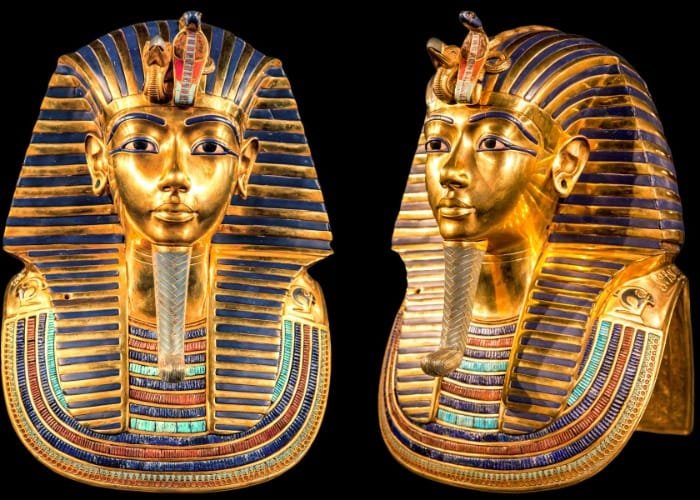
1. The Golden Funeral Mask
The golden funeral mask of King Tut is one of the most iconic artifacts from the tomb, crafted with meticulous detail. Made from solid gold and weighing 11 kilograms, the mask features the young pharaoh’s face, with inlaid lapis lazuli, turquoise, and quartz. The cobra and vulture on the headdress represent protection from evil. This extraordinary mask, designed to preserve Tut’s identity in the afterlife, symbolizes divine kingship and the eternal nature of the pharaoh's soul. It remains a symbol of ancient Egyptian artistry and the grandeur of royal burial customs.
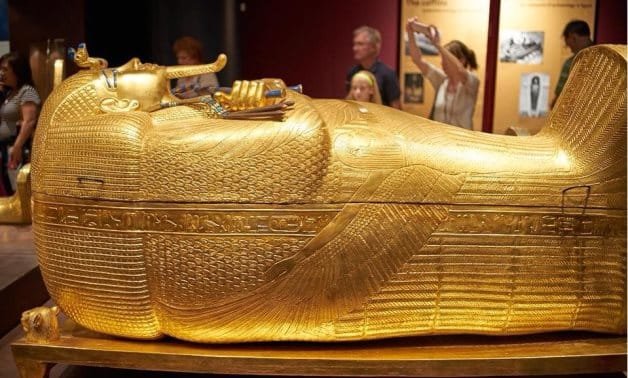
2. The Solid Gold Coffin
King Tut’s outer coffin, made entirely of gold, is one of the most striking treasures found in the tomb. Weighing over 110 kilograms, it was designed to protect the king’s mummified body for eternity. The coffin was intricately crafted, with detailed engravings and divine symbols. It encased the wooden inner coffin, which held the pharaoh’s mummified remains. The gold coffin reflects the immense wealth and importance of the pharaoh and his belief in an eternal afterlife. The gilded surfaces were intended to ensure that the king’s spirit would live on in the next world.

3. The Inner Coffin
The inner coffin found in King Tut’s tomb is crafted from wood and coated in gold leaf. It is elaborately decorated with Egyptian deities and symbols of royal authority, reinforcing the pharaoh’s divine nature. The coffin contained Tutankhamun's mummified body inside the gold outer coffin. The golden exterior and fine craftsmanship indicate the pharaoh’s status, as only royalty could be afforded such luxuries in life and death. The inner coffin’s design also provided spiritual protection and was believed to facilitate the king’s passage into the afterlife with the gods.
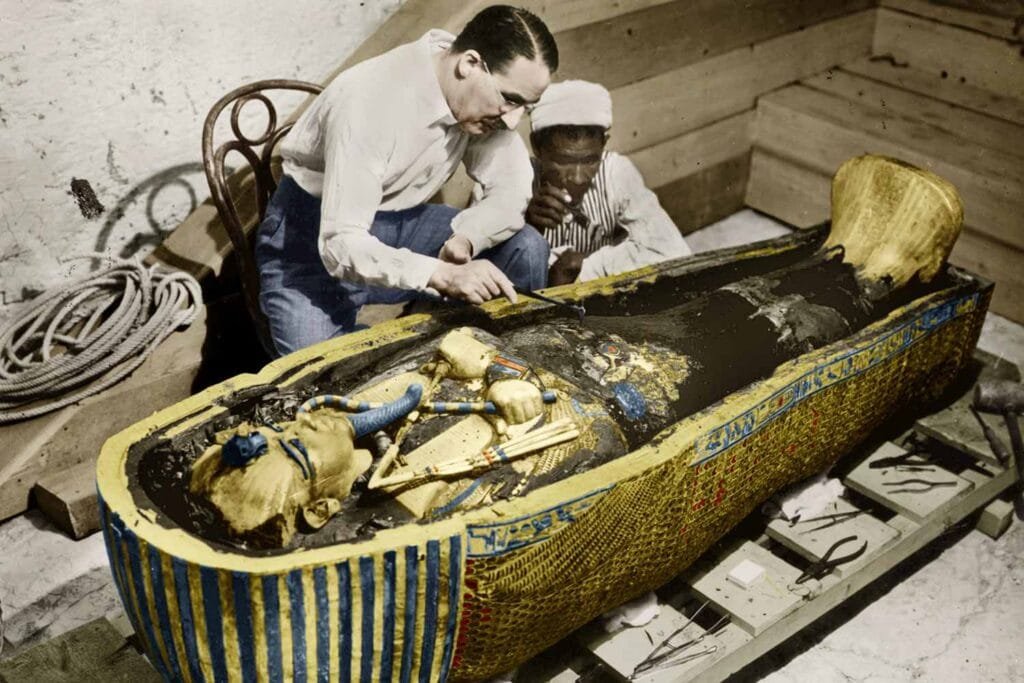
4. The Sarcophagus
The stone sarcophagus of King Tutankhamun, a massive and intricately carved structure, housed the king's mummified remains. Made from red quartzite, it was both a burial vessel and a symbol of the king’s journey to the afterlife. The sarcophagus is adorned with detailed carvings of gods, and its lid features a life-sized image of King Tut. The design of the sarcophagus emphasized the importance of divine protection and immortality, which were central themes in Egyptian burial rituals. The lavishness of the sarcophagus reflected the royal status of Tutankhamun and his sacred duty as ruler of Egypt.
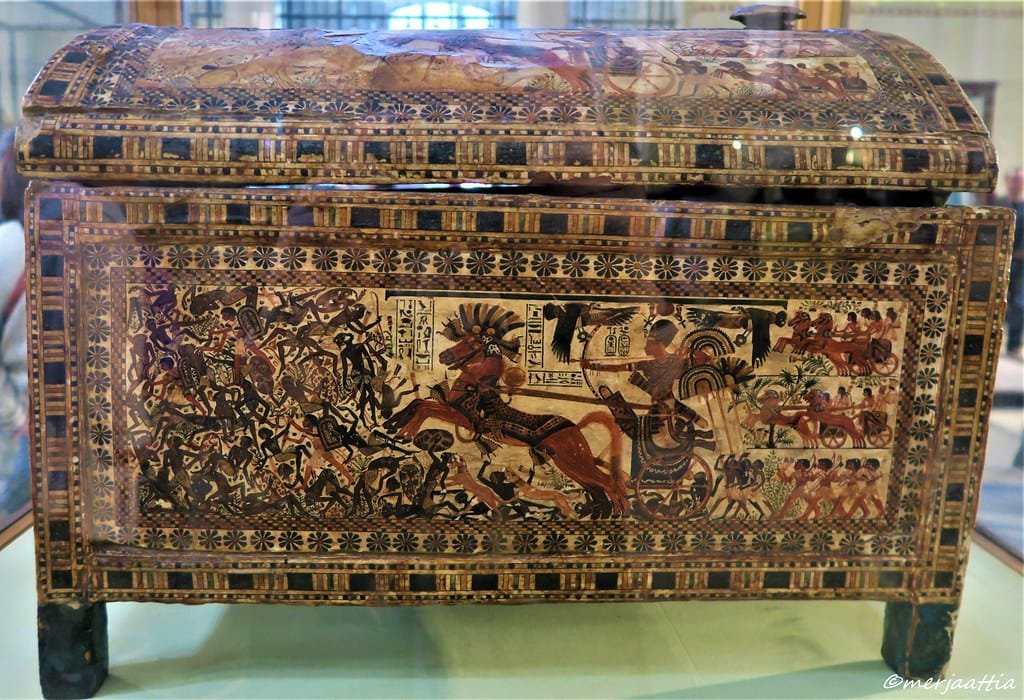
5. The Antechamber's Painted Chest
The painted chest found in the Antechamber of Tut’s tomb is a beautifully crafted artifact, illustrating scenes of King Tut in the company of gods. The chest’s vivid colors depict the king participating in divine rituals and receiving offerings from the gods. The lid and sides of the chest feature symbolic images that emphasize the pharaoh’s sacred role and divine connection. The chest was used for storing precious items, such as clothing, jewelry, and ceremonial tools. Its detailed artistry and vibrant hues highlight the artistic expertise of ancient Egyptian craftsmen and the importance of royal rituals.
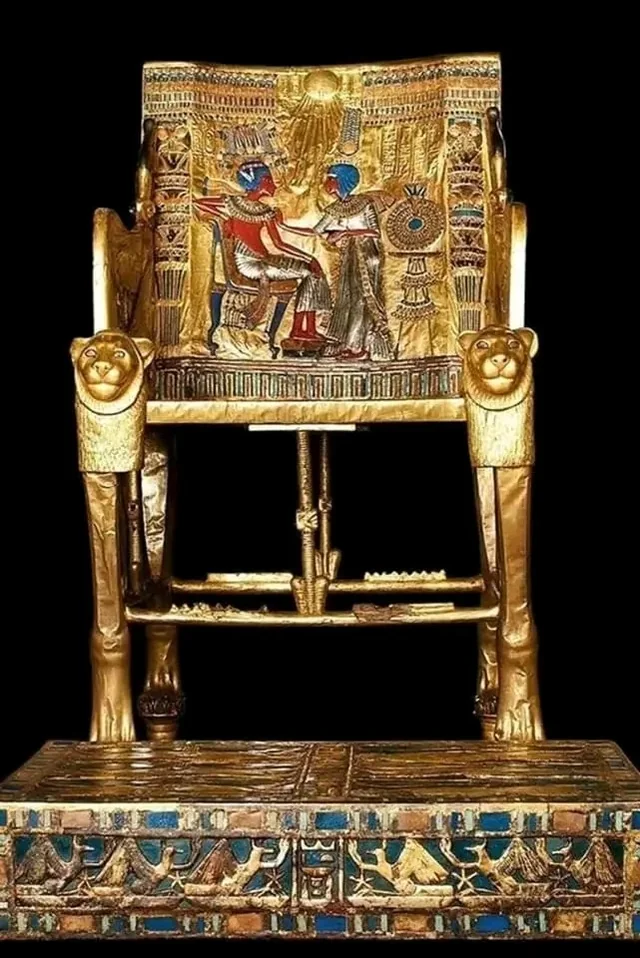
6. The Throne
King Tut's golden throne is one of the most significant and visually striking pieces found in his tomb. The throne features a depiction of the young king and his wife, Ankhesenamun, seated together in a royal embrace. The backrest is adorned with a scene that symbolizes peace and harmony in the royal family. The throne’s design uses gilded wood and inlaid stones, highlighting the craftsmanship of the period. It reflects the king’s connection to both the divine and the earthly, symbolizing the stability and unity that he brought to Egypt, despite his short reign.
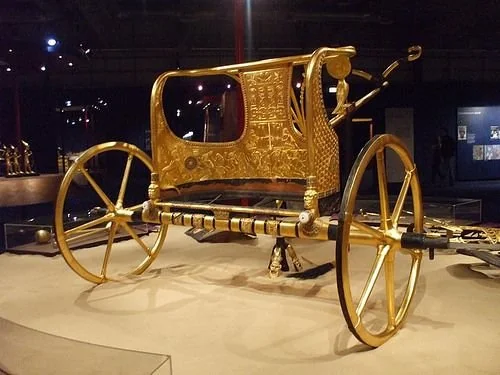
7. The Chariot
Several chariots were found in King Tut’s tomb, including ceremonial chariots and those likely used for military or royal transport. These chariots, made of wood and gilded with gold, are beautifully crafted with intricate inlays and decorations. The chariot found in the tomb was used by the king in both ceremonial and possibly battle contexts. The discovery of these vehicles highlights the king’s importance and his participation in both war and statecraft. The chariots also symbolize the pharaoh’s ability to command power, with their inclusion reinforcing his royal and divine status.
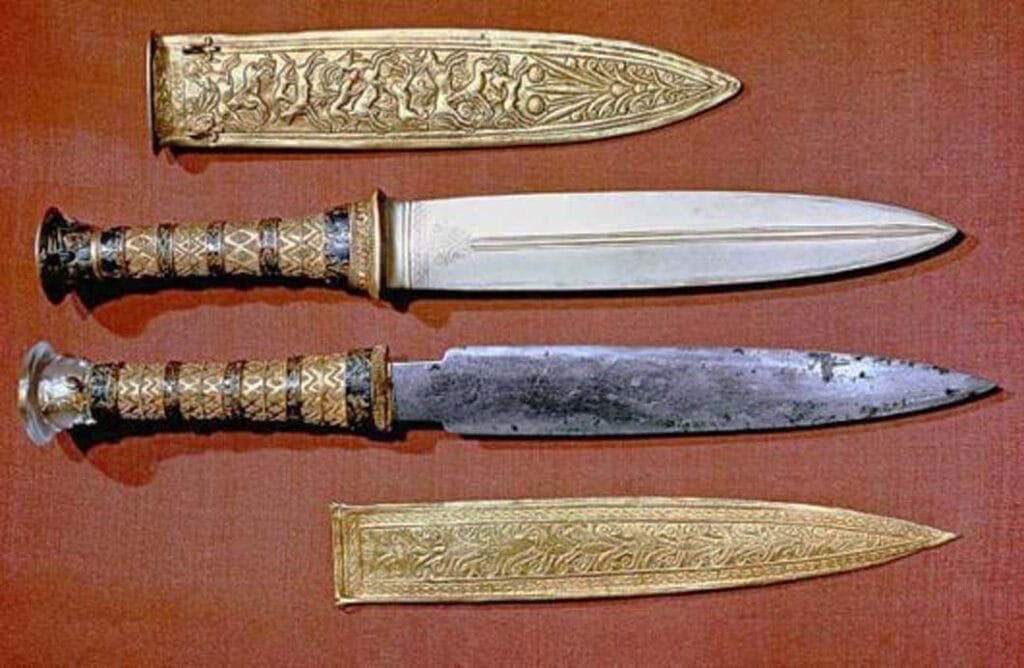
8. The Sword of Tutankhamun
The golden sword discovered alongside King Tut’s body is a ceremonial piece of remarkable craftsmanship. The sword features a bronze blade with a golden hilt, decorated with fine gemstones and a lion's head at the top. The sword was most likely used for ceremonial purposes rather than combat, symbolizing the king’s power and authority. The blade is made from iron, which is believed to have been meteorite iron, a rare and precious material in ancient Egypt. The sword represents both Tutankhamun’s strength as a ruler and his divine right to rule.

9. The Chariot Wheel
The chariot wheel found in King Tut's tomb is a symbol of the royal chariot's importance in Egyptian culture. Crafted with exceptional skill, the wheel is adorned with inlays and painted with decorative patterns. Chariots were central to the king’s military prowess, as well as a symbol of his divine role as a warrior and leader. The wheel, along with other chariot pieces, provides insight into the technology and craftsmanship of ancient Egypt. These vehicles were used for ceremonial processions, but they also symbolized the king’s status and connection to the gods and the land of Egypt.
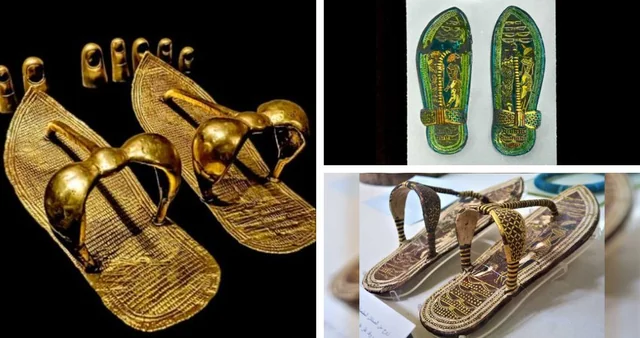
10. The Royal Sandals
The royal sandals discovered in King Tut’s tomb are exquisitely crafted from gilded leather and decorated with symbolic motifs. These sandals were likely intended for use during royal ceremonies and were part of the pharaoh’s regal attire. The soles of the sandals are inscribed with images of Tutankhamun’s enemies, symbolizing his victories and dominance. These sandals not only served a practical purpose but also conveyed messages of divine power and the king’s connection to the gods. They reflect the care and thought put into every item associated with the young ruler’s burial.
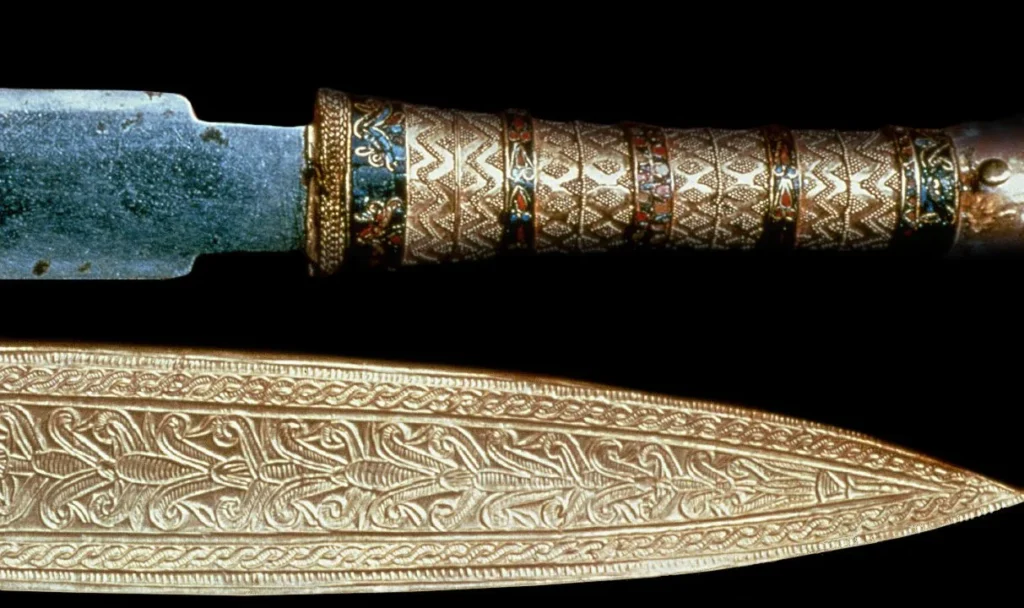
11. The Golden Dagger
The golden dagger found with King Tut’s mummified body is a beautiful and functional object, with a blade made from iron and a hilt that is elaborately decorated with gold and gemstones. The dagger is thought to have had ceremonial uses, symbolizing the power of the king to command life and death. Its exquisite craftsmanship and decorative elements reflect the wealth of Egypt’s royal family. The dagger, found near Tut’s body, was likely placed in the tomb to accompany the king in his journey to the afterlife, ensuring his protection and strength in the next world.
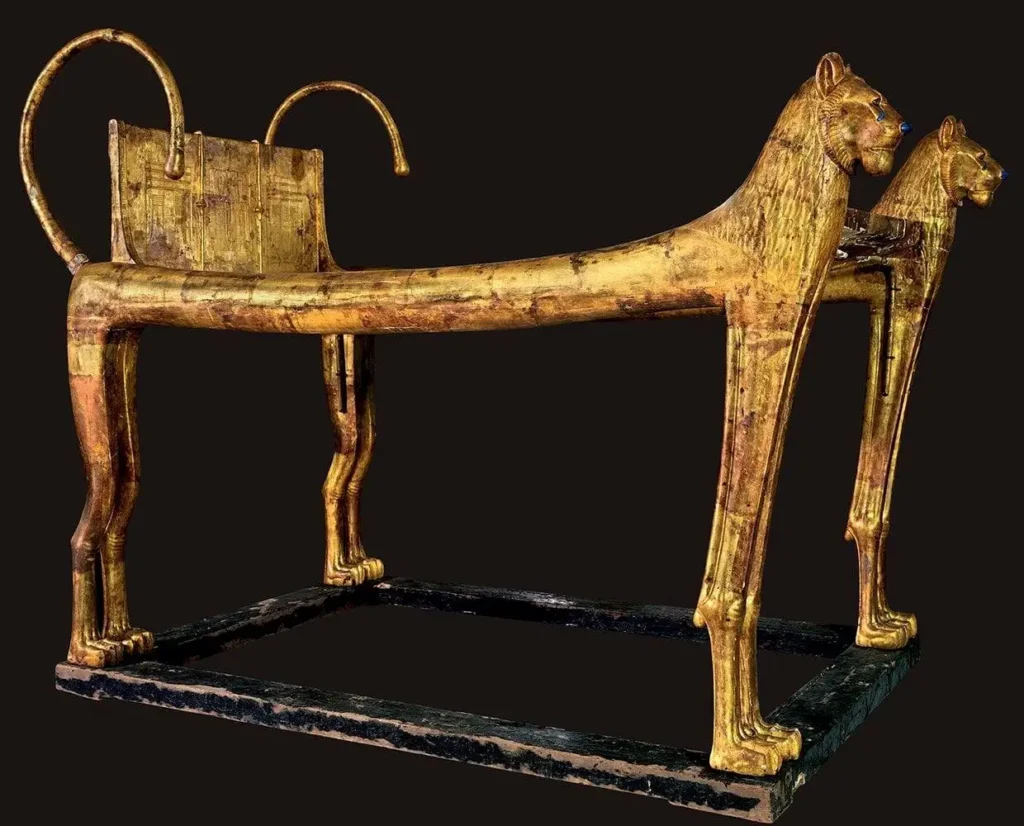
12. The Bed
The golden bed found in King Tut’s tomb is an intricately designed piece of furniture, made from wood and gold leaf. The bed was likely used by the young king for rest and possibly for ceremonial purposes. Its headboard features detailed carvings, including lions, which were a symbol of royal strength and protection. The bed’s design is both functional and symbolic, representing the king’s divine role and his journey into the afterlife. Its gold decorations emphasize the importance of luxury and the afterlife in Egyptian royal burials.
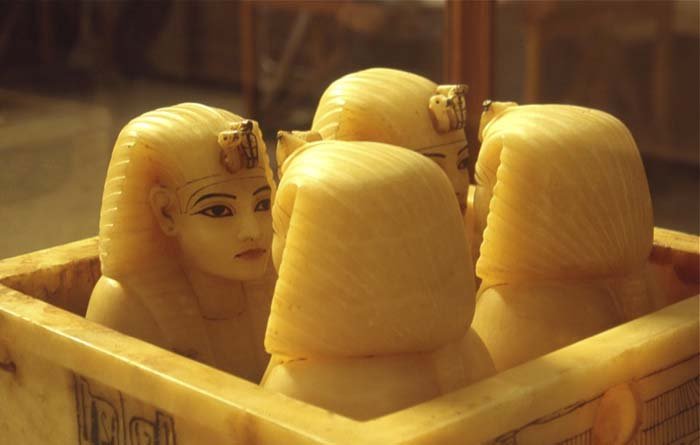
13. The Canopic Jars
The canopic jars found in King Tut’s tomb were used to store the pharaoh's internal organs, which were removed during mummification. These jars were made of wood, stone, and gold, and were decorated with faces representing the four sons of the god Horus. The jars were placed in the burial chamber, ensuring that the king’s organs were preserved for his journey into the afterlife. Each jar had a specific function and was believed to provide protection and spiritual guidance to the pharaoh in the afterlife, reflecting the Egyptians' belief in life after death.
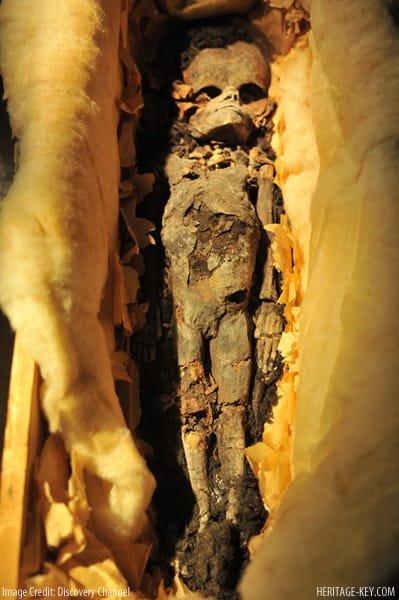
14. The Mummified Fetus
Among the treasures found in King Tut’s tomb were the mummified remains of two fetuses, believed to be children of Tutankhamun and his queen, Ankhesenamun. These fetuses, carefully preserved, were thought to symbolize the tragic loss of potential heirs to the throne. Their presence in the tomb suggests that they may have been intended to accompany the king in the afterlife or were placed there to protect him in his journey. The discovery of these remains has spurred debate about Tut's family life and the reasons behind his early death.
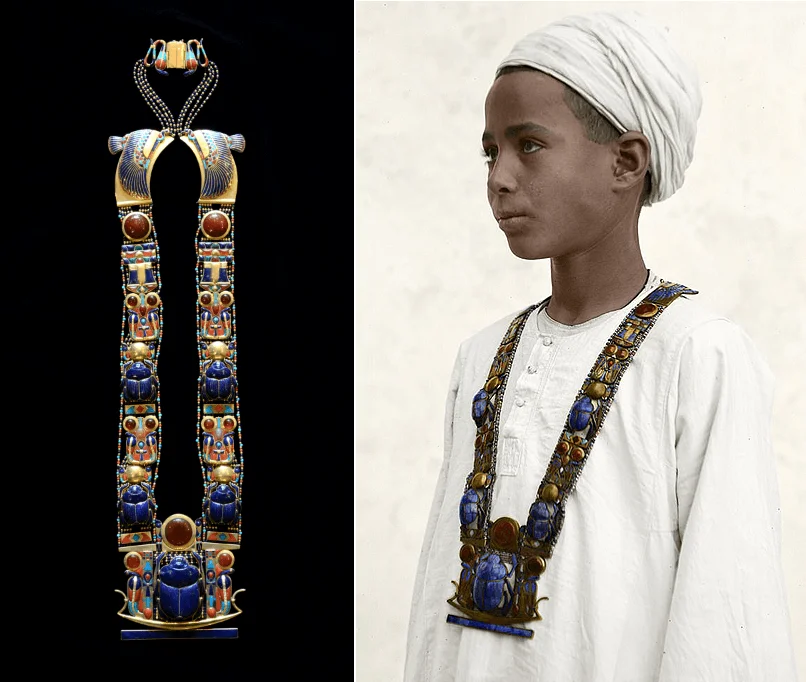
15. The Necklace with the Scarab
A golden necklace found in King Tut’s tomb features a large scarab beetle pendant, symbolizing rebirth and resurrection. The scarab, a common symbol in ancient Egypt, was associated with the god Khepri, who represented the rising sun. The necklace is finely crafted, with intricate detailing and inlaid lapis lazuli and turquoise. It served not only as a beautiful piece of jewelry but also as an amulet to ensure the king’s safe passage into the afterlife. The scarab also reflects the Egyptians’ belief in the cyclical nature of life and the sun's daily resurrection.
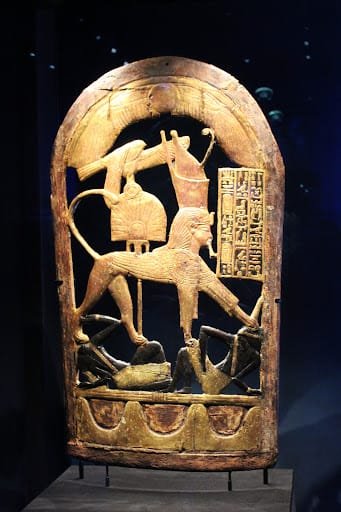
16. The Shield
The golden shield discovered in King Tut’s tomb is richly decorated with scenes of wild animals, gods, and other royal motifs. This shield, likely used for ceremonial purposes, was designed to symbolize the king’s military strength and his divine protection. The shield was crafted from gold and features detailed engravings, demonstrating the high level of skill possessed by Egyptian artisans. The shield symbolizes Tutankhamun’s role as a protector of Egypt, showcasing his power and divine right to rule. It also represents the Egyptian belief in the afterlife, where protection from enemies was paramount.
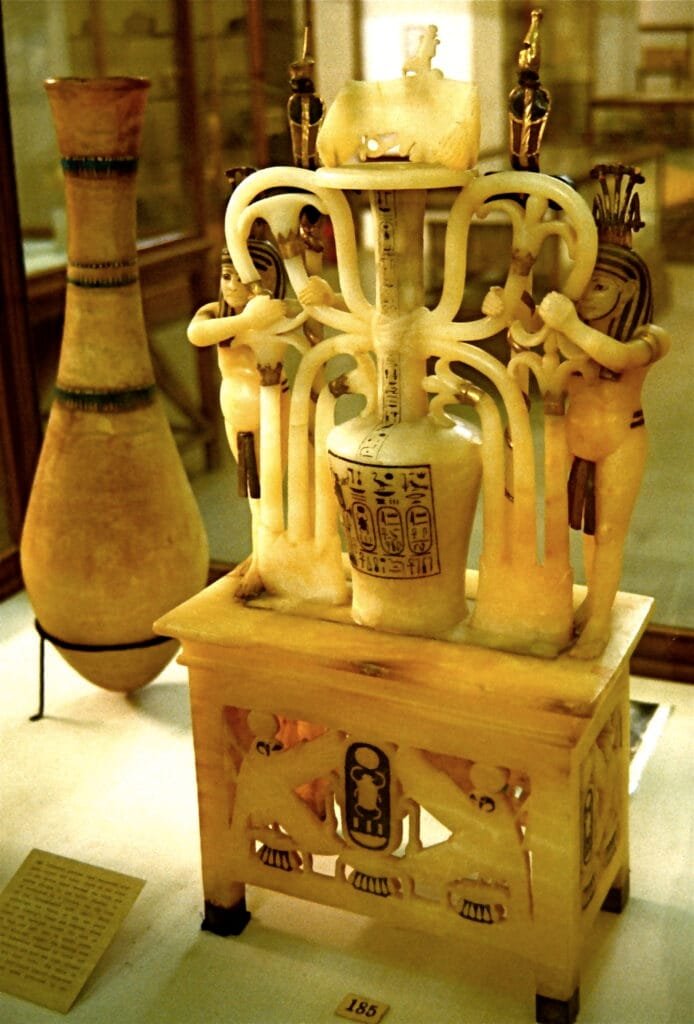
17. The Wine Jars
Wine jars found in King Tut’s tomb were among the many objects that reflected the importance of ritual offerings in ancient Egyptian burial customs. The jars were made of clay and stone, and many were inscribed with the names of gods, indicating their religious significance. These jars contained wine, a symbol of celebration and renewal, which was believed to nourish the soul in the afterlife. The jars, along with other offerings, were placed in the tomb to ensure that King Tut would have the sustenance and blessings needed for his journey into the next life.
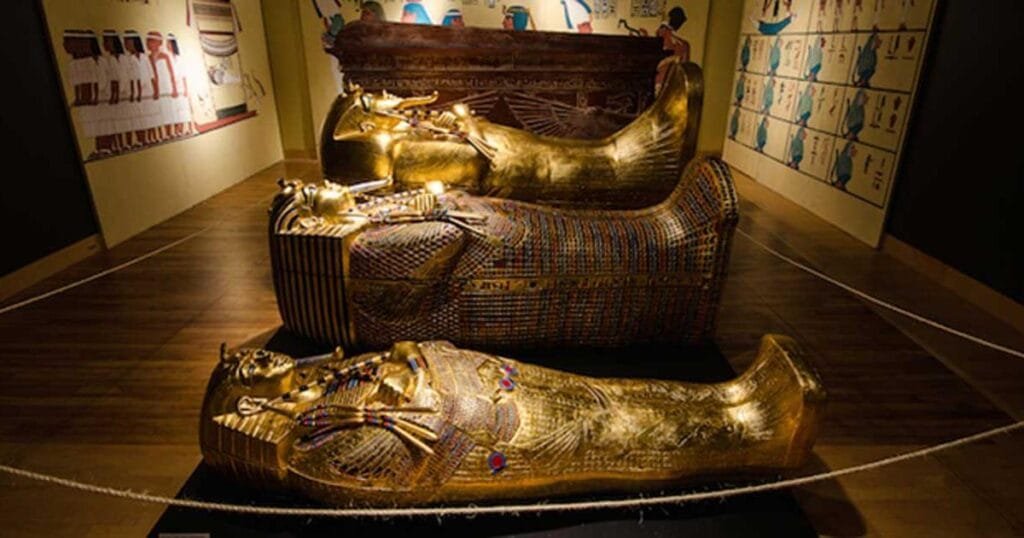
18. The Gold-Inlaid Casket
The gold-inlaid casket found in King Tut’s tomb was used to store the pharaoh’s internal organs during the mummification process. It is beautifully decorated with intricate hieroglyphic carvings and scenes of gods, ensuring divine protection for the organs. The casket’s fine craftsmanship reflects the Egyptian belief that the pharaoh's body and spirit would be preserved for eternity. Made from wood and gold, the casket emphasizes the wealth and religious significance of royal burials. It served as an important element in Tut’s journey to the afterlife, ensuring his spiritual well-being.
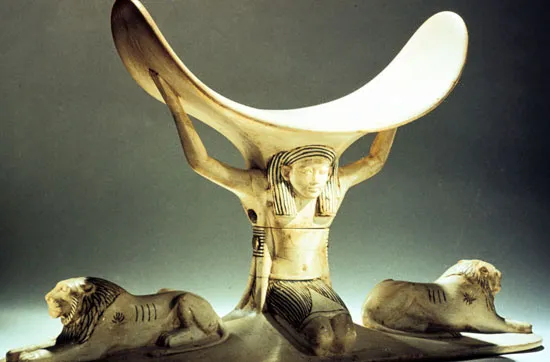
19. The Gold Headrest
The golden headrest found in King Tut’s tomb is an exquisite piece of royal furniture designed for the king’s comfort during his life. The headrest is adorned with gold and features detailed carvings. It was likely used for sleeping or resting during royal ceremonies. The headrest symbolizes the king’s divine right to rest and symbolizes eternal peace and protection in the afterlife. The ancient Egyptians believed that a headrest helped the deceased retain their form and identity after death, thus it was a necessary item for Tutankhamun’s journey into the next life.
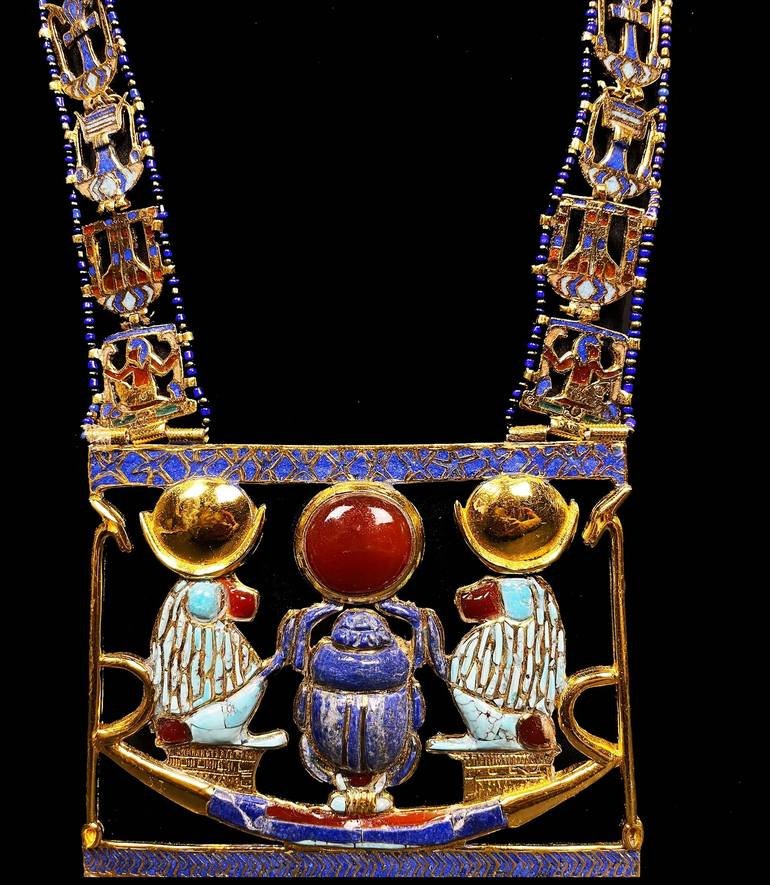
20. The Cursed Necklace
A necklace found in King Tut's tomb became infamous due to the so-called "curse of the pharaohs." The necklace features several large gemstones and intricate goldwork, likely meant as an amulet to protect the king in the afterlife. Over time, legends grew around the necklace, with rumors suggesting that those who disturbed Tut's tomb would be cursed. Despite these superstitions, the necklace remains a testament to the exceptional craftsmanship of ancient Egyptian jewelers. It represents the belief in magical protection and the divine power attributed to the pharaohs during their lifetimes and beyond.
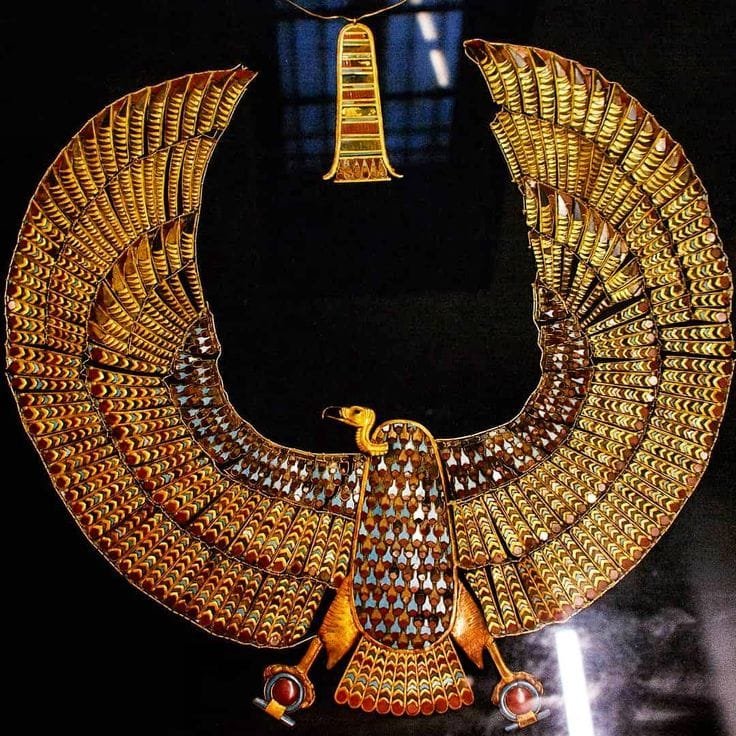
21. The Gold Collar
The gold collar discovered in King Tut’s tomb is an intricate piece of jewelry that was placed around the pharaoh’s neck. It is made of gold and decorated with lapis lazuli, turquoise, and other precious stones. The collar is a perfect example of ancient Egyptian craftsmanship, with its detailed design symbolizing divine protection and immortality. The gold collar also represents the pharaoh’s connection to the gods, as jewelry in ancient Egypt was often used as a medium to convey spiritual significance. This lavish piece of jewelry reinforced King Tut’s divine status and importance.
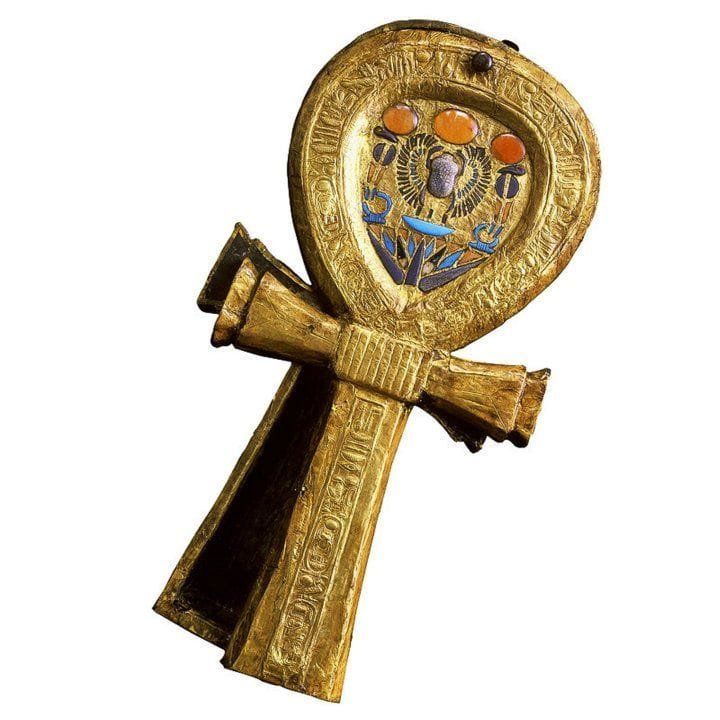
22. The Mirror
The bronze mirror found in King Tut’s tomb was an essential object in the daily life of the royal family. The mirror features an ornately carved handle with symbolic motifs, likely representing the gods or royal authority. Mirrors in ancient Egypt were thought to reflect the soul as well as the physical image, which made this item particularly important for spiritual protection. The mirror is not just a functional object; it is also an example of the Egyptians’ belief in beauty and the afterlife. Its finely crafted handle highlights the skill of Egyptian artisans and the importance of personal grooming and appearance.

23. The Royal Scepter
The royal scepter found in King Tut’s tomb is a symbol of the pharaoh’s absolute authority over Egypt. Crafted from wood and gold, the scepter was adorned with precious stones and often depicted gods or divine symbols. It represents the king’s role as both a political and religious leader, acting as the representative of the gods on Earth. The scepter was a ceremonial item, used during royal rites and rituals, and was meant to ensure that the pharaoh ruled justly and with divine guidance. It symbolizes power, control, and the pharaoh’s sacred role in maintaining order.
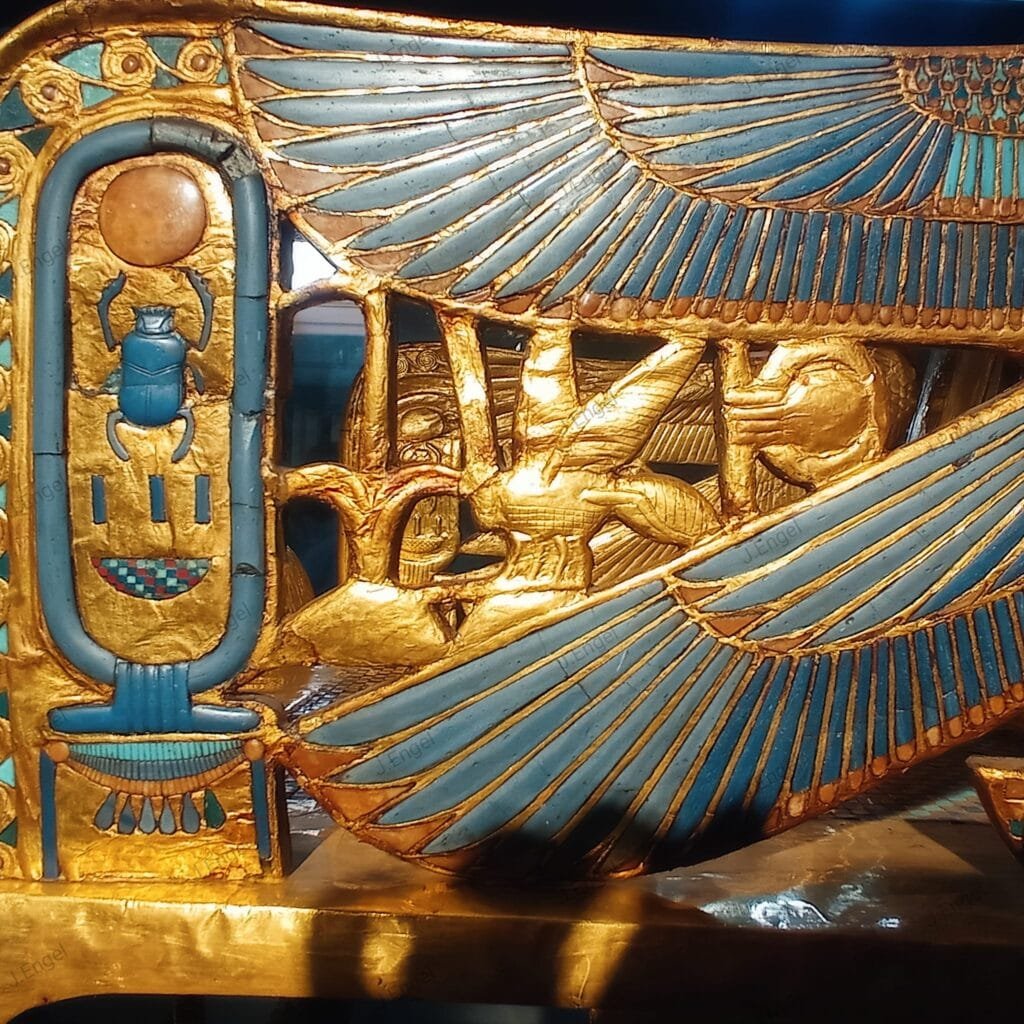
24. The Cartouche of Tutankhamun
A cartouche is a carved rectangular frame that contains the royal name of a pharaoh, and the cartouche of Tutankhamun was discovered in his tomb. Made of gold and often inscribed with hieroglyphs, the cartouche symbolizes the pharaoh’s divinity and eternal rule. The cartouche was an important symbol of royal authority, and its inclusion in the tomb was intended to ensure that King Tut’s name would live on forever, both in the world of the living and the afterlife. The gold cartouche remains a powerful symbol of Tutankhamun's place in Egyptian history.
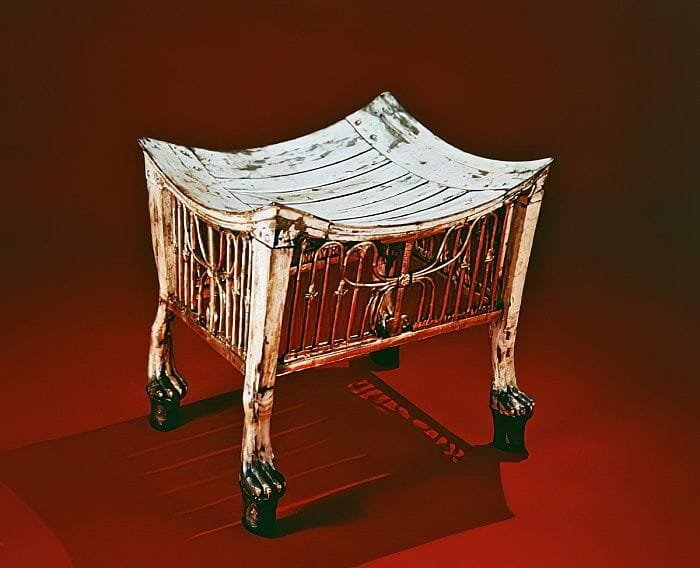
25. The Wooden Stools
Several wooden stools were found in King Tut’s tomb, each finely crafted and intricately designed. These stools were used for seating and likely served both functional and ceremonial purposes. Many of them feature carvings of animals, such as lions, symbolizing strength and royalty. The stools were likely placed in the tomb to accompany the pharaoh in the afterlife, ensuring he had a comfortable place to rest in the next world. The careful construction and decorative motifs of these stools reflect the value placed on comfort and luxury by the ancient Egyptian elite.
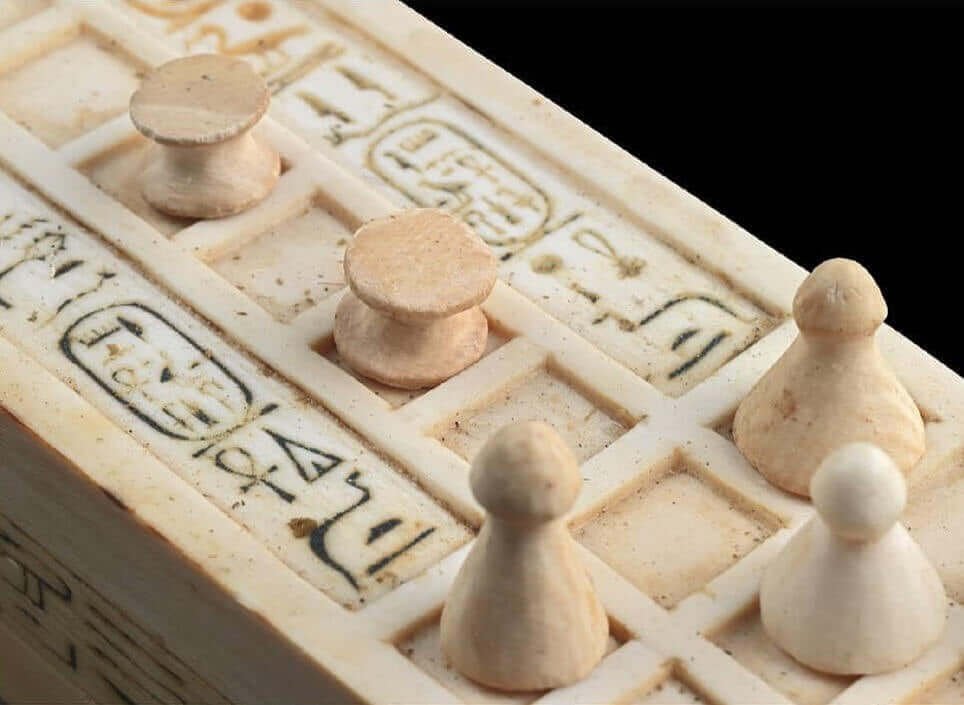
26. The Pharaoh's Game Board
The game board found in King Tut’s tomb is an example of the ancient Egyptian game known as Senet. This game, played by the pharaoh and his court, was believed to have spiritual significance and represented the journey of the soul in the afterlife. The board is made of wood and decorated with symbols of life and death. It is both a functional object and a spiritual tool, used in ceremonies to ensure the ruler’s passage into the afterlife. The presence of the game board in Tut’s tomb reflects his belief in the power of recreation and spiritual preparation.
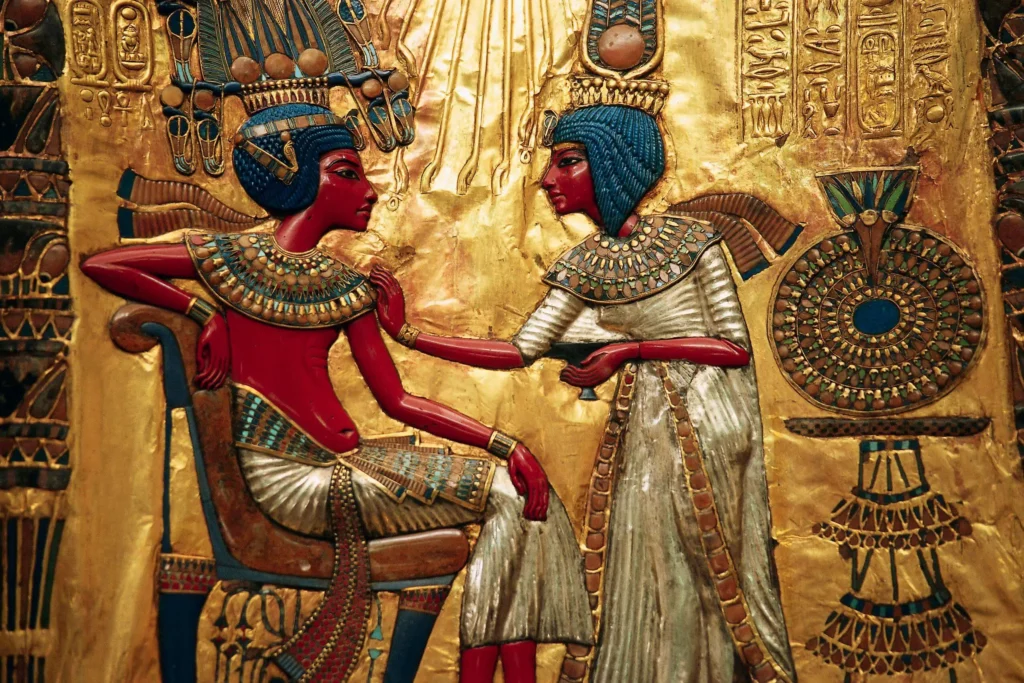
27. The Golden Ankhs
Golden ankhs found in King Tut’s tomb symbolize eternal life, a key concept in Egyptian religion. The ankh is a hieroglyphic symbol representing life and immortality, often associated with gods and pharaohs. The golden versions discovered in the tomb were likely worn as jewelry or used as amulets, offering the pharaoh protection in the afterlife. These ankhs symbolize the belief that the pharaoh’s life was continuous and eternal, extending beyond death into the spiritual realm. Their gold construction underscores the wealth and divine power that King Tut enjoyed, both in life and death.
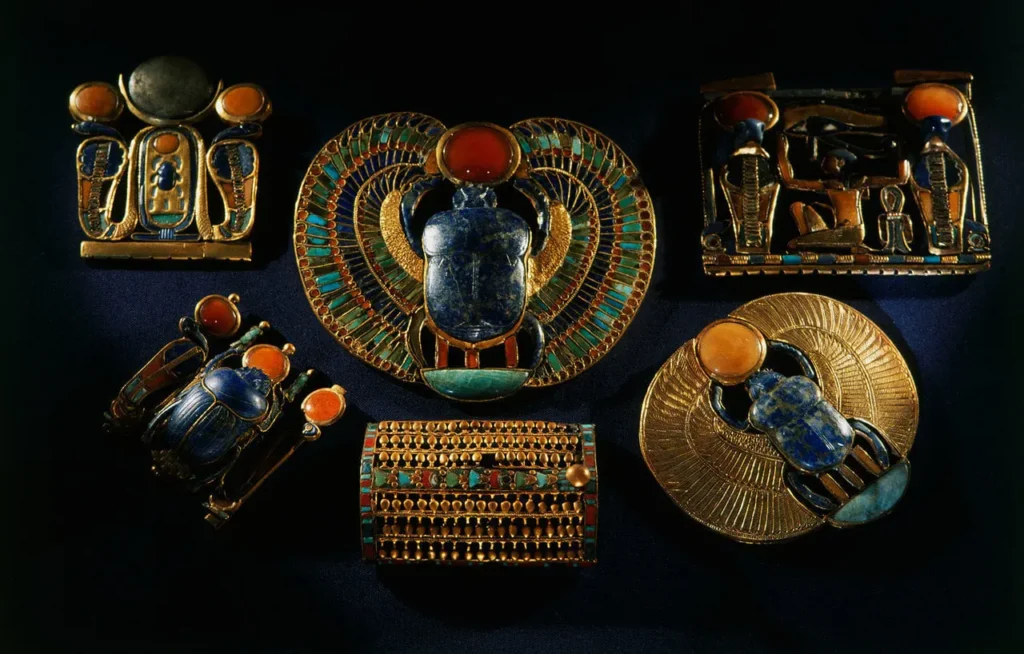
28. The Royal Amulet
The royal amulet found in King Tut’s tomb was an important protective object. Crafted from gold, the amulet features detailed hieroglyphs and representations of deities. Amulets like these were believed to have magical properties, providing the wearer with divine protection and ensuring a safe passage into the afterlife. The royal amulet, often worn by kings and queens, helped safeguard their spirits against malevolent forces. In King Tut’s tomb, the amulet was placed near his body as part of the larger ritual to ensure his spiritual well-being in the journey to the afterlife.
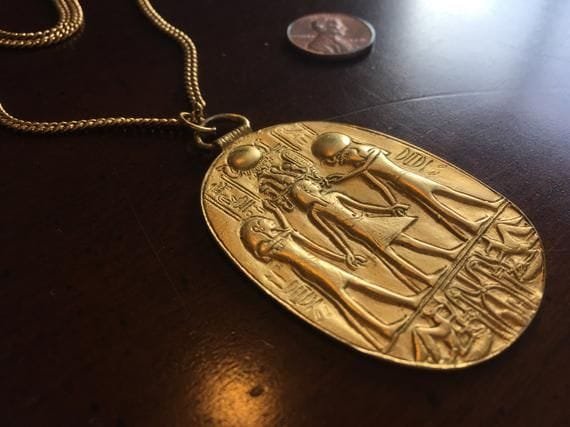
29. The Cartouche Necklace
The cartouche necklace discovered in King Tut’s tomb is made of gold and features several lapis lazuli beads. The necklace includes a central cartouche, symbolizing the pharaoh’s royal identity. The cartouche represents the king’s name and his divine right to rule. The necklace was likely worn by King Tut during his lifetime as a symbol of his sacred role, and it was placed in his tomb as a part of the ritual to ensure the continuation of his soul in the afterlife. The beautiful craftsmanship and use of precious materials reflect the wealth and status of the pharaoh.
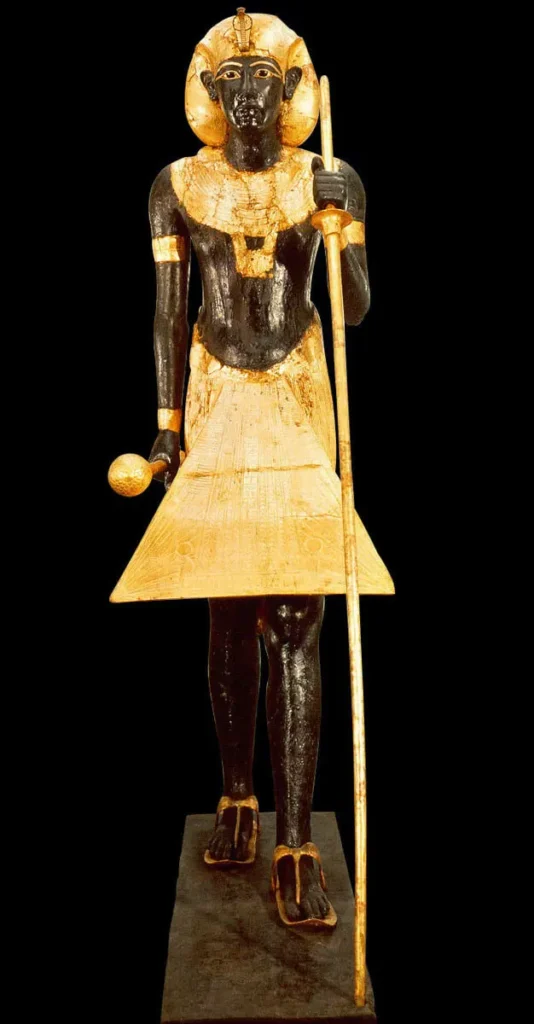
30. The Royal Sphinx Statue
The royal sphinx statue found in King Tut’s tomb is a representation of the king in a seated position, with the head of a lion and the body of a human. Sphinx statues were symbols of strength, protection, and royalty, and were often placed in tombs to ensure the pharaoh's power over the forces of chaos. This particular sphinx is a symbol of King Tut’s divine right to rule and his role as the protector of Egypt. The statue's powerful posture and detailed features demonstrate the skilled craftsmanship of ancient Egyptian artisans and their ability to create lasting representations of divine authority.


